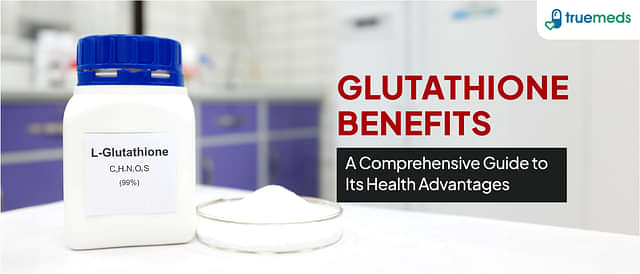Granuloma Inguinale: Overview, Causes, and Symptoms
Last updated on : 05 Mar, 2024
Read time : 5 min
What is Granuloma inguinale?
Granuloma inguinale is a microorganism infection that’s usually related to different sexually transmitted diseases. Donovan bodies are intracellular inclusions in macrophages that characterize granuloma inguinale. It affects the skin and mucous membranes of the vaginal region, causing nodular lesions that eventually turn into ulcers.
Donovanosis is a term used to describe granuloma inguinale. The majority of infections affect adults between the ages of 20 and 40.
Because medical therapy is rare to treat, the condition frequently stays untreated. Furthermore, painless genital ulcers can be untreated as syphilis. The ulcers eventually destroy internal and exterior tissue, causing considerable mucus and blood to leak from the highly vascular sores. Donovanosis’s destructive nature raises the danger of superinfection by other harmful microorganisms.
Causes of granuloma inguinale
The bacteria Klebsiella granulomatis can be the cause of this, a rare sexually transmitted illness. Chronic inflammation and scarring of the genitals result.
This is a sexually transmitted infection (STI) that can occur by vaginal or anal contact with an infected partner. It can occur during oral intercourse in rare cases. The most common granuloma inguinale symptoms are a painless, red mass on or around the genitals that slowly enlarges and finally breaks down to leave a sore.
If people have characteristic symptoms of this and reside in places where the infection occurs, doctors suspect the infection, and they confirm the diagnosis by evaluating a sample of fluid scraped from the sore.
Stages of Granuloma Inguinale
Stage 1
The little pimple will spread and destroy the surrounding tissue in the first stage. The tissue turns pink or a light red as it begins to fade away. The lumps subsequently transform into velvety-textured elevated crimson nodules. This occurs in the area of the anus and genitals. Although the bumps are harmless, they can bleed.
Stage 2
Bacteria begin to erode the skin in the second stage of the inguinale granuloma. You’ll get superficial sores that migrate from the genitals and anus to the thighs and lower abdomen or inguinal area after this happens. The ulcers’ perimeters are coated by granulated tissue, as you can see. The ulcers may have a bad odour.
Stage 3
The sores deepen and change into scar tissue when granuloma inguinale progresses to the third stage.
Symptoms of granuloma inguinale
Granuloma inguinale symptoms might appear 1 to 12 weeks after coming into touch with the bacteria that can be causes of granuloma inguinale. These may include the following:
- There are sores in the anal area because of the bacteria klebsiella granulomatis.
- On the genitals or around the anus, small beefy-red lumps form.
- The bumps become elevated, beefy-red, velvety nodules known as granulation tissue. They are usually harmless, but they can bleed also.
- Inguinale granuloma spreads slowly and damages genital tissue.
- Groyne
- The skin colour of the genitals and the skin around them fade.
It can be difficult to discern the difference between donovanosis and chancroid in the early stages.
In its later stages, donovanosis can seem like advanced genital cancers, lymphogranuloma venereum, or anogenital cutaneous amebiasis.
Diagnosis of Granuloma Inguinale
It can be difficult to diagnose in the early stages since the lesions may go unnoticed. Unless ulcers have formed and failed to heal, your doctor is unlikely to detect causes of granuloma inguinale.
Your doctor may request a skin biopsy of the ulcers if they do not heal after a long period of time to check out for granuloma inguinale symptoms. This will almost certainly be a punch biopsy. During a punch biopsy, your doctor will use a circular blade to remove a little portion of the ulcer. The sample will test as per klebsiella granulomatis bacteria once it removes. By scraping a portion of the lesion and performing additional tests on the sample, bacteria may be detected.
Because it has been linked to an increased risk of other sexually transmitted infections (STDs), you may be given blood tests, diagnostic testing, or cultures to check for them as well.
How to treat Granuloma Inguinale?
If you are going through granuloma inguinale consult your doctor, so he/she will recommend you medication like antibiotics such as tetracycline and macrolide erythromycin to treat inguinal granuloma. Streptomycin and ampicillin are two antibiotics that recommend for, long-term treatment to cure the condition. The majority of treatments are for three weeks, but they will extend until the infection is cure. Sometimes doctors will inject antibiotics through muscles or veins.
Within seven days of receiving treatment, most people begin to feel better. Healing may take a long time, and sores may reappear, therefore the doctor will extend the treatment.
To avoid permanent scarring and swelling in the genital, anal, and inguinal areas. Consult the doctor and treat as early as possible of inguinal granuloma. After you have taken treatment, you’ll need to have regular checkups to ensure the infection doesn’t resurface. It can recur after it appears to be cured in some cases. Your sex partners should be checked, and if they are infected, they should get treatment.
Prevention to take in Granuloma Inguinale
Inguinal granuloma (and other sexually transmitted infections) can be prevented by taking the following general precautions:
- Wear condoms correctly and regularly.
- Avoid risky sex behaviours such as switching sex partners frequently or having sexual relations with prostitutes or partners who have other sex partners.
- The infection must be treated as soon as possible (to prevent its spread to other people)
- Identification of infected people’s sexual contacts, followed by counselling or treatment for inguinal granuloma
- The most surefire strategy to prevent sexually transmitted diseases is to avoid having sex (anal, vaginal, or oral), however, this is often unrealistic.
For the latest coupons and offers on medicines, follow us on Instagram and Facebook
Disclaimer
Our healthcare experts have carefully reviewed and compiled the information presented here to ensure accuracy and trustworthiness. It is important to note that this information serves as a general overview of the topic and is for informational purposes only. It is not intended to diagnose, prevent, or cure any health problem. This page does not establish a doctor-patient relationship, nor does it replace the advice or consultation of a registered medical practitioner. We recommend seeking guidance from your registered medical practitioner for any questions or concerns regarding your medical condition.
Popular Articles
Recommended Articles
Recent Articles
Top-Selling Medicines:
Top-Selling OTC:
...View more
Company
About UsHealth ArticleHealth StoriesDiseases & Health ConditionsAll MedicinesAll BrandsNeed HelpFAQSubscribe
Registered Office Address
Grievance Officer
Download Truemeds

Contact Us
Our customer representative team is available 7 days a week from 9 am - 9 pm.
v3.7.8
Our Payment Partners



























































